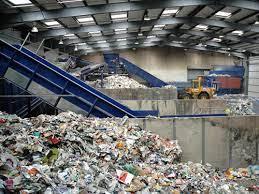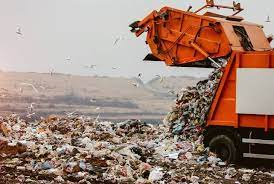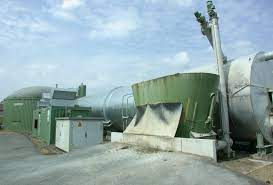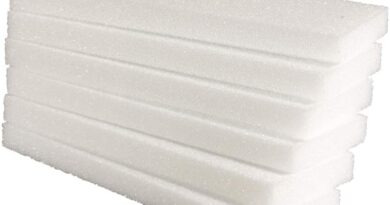Traditional Solid Waste Disposal Methods
In our earlier discussions of solid waste concept, we noted that the history of waste is closely tied to the varied activities undertaken by man on earth. Hence solid waste disposal has been part of our development and history. What actually have continued to change are the improvements in the techniques and benefits of solid waste management.
The traditional methods of solid waste disposal in most communities and cities include but is not limited to the following: – barging into the waters (streams, rivers and sea), open dumping on land, crude or open air burning, feeding of hogs or other animals, burying etc.
1. Burial of Solid Waste
This would have been a good method of solid waste disposal as it tends to obey natural process of returning materials especially organic matter content to the soil. However burial can only be applied to smallest quantities of solid waste and even at that it is still cost and labour intensive.
Advantages Burial Method
- It encourages the recycling mineral elements and natural energy resources
- It may increase soil fertility
- It is eco-friendly
- It can be handled at household level
- It does not require skilled labour for operation.
Disadvantages
- It is laborious
- It is not suitable for scale up operations
- It is costly to apply
- It may lead to contamination of land and water resources
- It is not sustainable.
2. Open Dumping (Crude Tipping)
This method involves the indiscriminate dumping of solid waste without adequate consideration to their environmental and health effects. Most of the municipal solid waste in developing countries is dumped on land in a more or less uncontrolled manner.
Those dumps make very un- economical use of the available space and often produce unpleasant and hazardous smoke from slow-burning fires.

The present disposal situation is expected to deteriorate even more as, with rapid urbanization, settlements and housing estates encircle existing dumps and the environmental degradation associated with the dumps directly affects the population.
Waste disposal sites are, therefore, also subject to growing opposition, and it is becoming increasingly difficult to find new sites that meet public approval and are located a reasonable distance from the collection area.
Advantages Open Dumping
- It is cheap to operate
- It requires little or no planning
- It does not utilize skilled labor in operation.
Disadvantages
- It produces objectionable odors and it is also unsightly
- It can lead to fire accidents
- It provides ideal breeding places for rats and vermin
- It can lead to fire and physical accident
- It is not sustainable and eco-friendly
- Ground water and run off pollution.
3. Dumping in to Water Bodies (Barging into the Sea)
This is a method popular in riverine communities but is now in abuse getting popular in unplanned areas of our major cities in the country.
Riverine communities with inadequate arable lands use canoes and barges to carry solid waste far into the sea for disposal.
However, it is not uncommon to find in Nigerian semi-urban and crowded urban settlements people who dump solid waste directly into small streams as disposal system.
Dumping of solid waste into water bodies is not a good practice as the wastes not only provide nutrients in the water bodies leading to the condition called eutrophication. This causes high oxygen crises for automobile scrap components, landscape wood, refuse, agricultural field waste, bulky industrial waste, scrap furniture and leaves with other materials raked during street cleaning.
Open burning has been practiced by a number of urban centres because it reduces the volume of refuse received at the dump and therefore extends the life of their dumpsite.
Garbage may be burnt because of the ease and convenience of the method or because of the cheapness of the method. In countries where house holders are required to pay for garbage disposal, burning of waste in the backyard allows the householder to avoid paying the costs associated with collecting, hauling and dumping the waste.
Open burning has many negative effects on both human health and the environment. This uncontrolled burning of garbage releases many pollutants into the atmosphere.
These include dioxins, particulate matter, polycyclic aromatic compounds, volatile organic compounds, carbon monoxide, hexachlorobenzene and ash.
All of these chemicals pose serious risks to human health. The dioxins are capable of producing a multitude of health problems; they can have adverse effects on reproduction, development, disrupt the hormonal systems or even cause cancer.
The polycyclic aromatic compounds and the hexachlorobenzene are considered to be carcinogenic. The particulate matter can be harmful to persons with respiratory problems such as asthma or bronchitis and carbon monoxide can cause neurological symptoms.
The harmful effects of open burning are also felt by the environment. This process releases acidic gases such as the halo-hydrides; it also may release the oxides of nitrogen and carbon. Nitrogen oxides contribute to acid rain, ozone depletion, smog and global warming.
In addition to being a greenhouse gas carbon monoxide reacts with sunlight to produce ozone which can be harmful. The particulate matter creates smoke and haze which contribute to air pollution.
Advantages of Open Air Burning
- Disease pathogens are eliminated in the fire
- It is cheap as it requires less manpower.
Disadvantages
- It may lead to fire accident
- It generates air pollution and may lead to acid rain
- It produces odour nuisance
- Resources are lost in the fire
- Half burnt refuse could afford breeding place for flies and food for rats and other vermin.
4. Hog Feeding
This is a method of feeding domestic animals especially pigs with wastes of garbage class. This practice is encouraged as it is in compliance with the principle of integrated waste management. It encourages waste sorting and reuse, energy recycling and serious cost reduction.
However it is only most practicable in waste streams composed mainly of garbage and adequately separated at source.
Advantages of Hog Feeding
- It is a source of food to domestic animals
- It saves costs
- It is sustainable and eco-friendly
- It can lend itself to large scale application.
Disadvantages
- It is an intermediate and not final method of solid waste disposal
- It may give rise to nuisances like odour, fly breeding and rodent infestation.
- Scavengers are pre-disposed to diseases like tuberculosis, anthrax and other zoonosis.
In summary, traditional waste management practices are efficient when applied to local situations in small communities with sparse population densities.
Read Also : Criteria for Hygienic Storage of Solid Waste
The methods are however overwhelmed when applied to bulk waste emanating from densely populated urban communities with sophisticated life styles and generating complicated waste profiles.
Knowledge and experiences gained in operating the traditional disposal systems may however be a good resource in developing technologies that will help address the challenges of semi urban and urban waste management.



